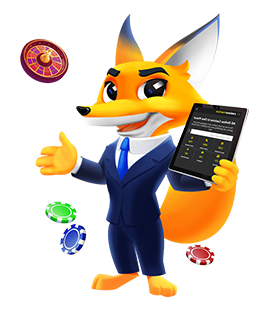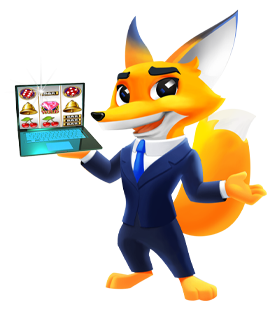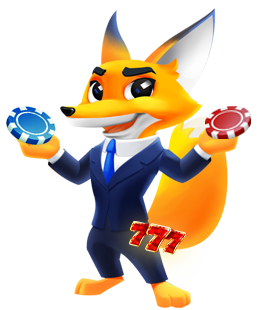Worst Hand in Blackjack: Strategies to Minimize Losses
The worst hand in blackjack, like a 16, leaves you teetering between busting out and making a risky play, with no guarantee of safety. In this guide, we’ll show you why these hands are so precarious and how to navigate them without tumbling off the edge.
By understanding the danger zones and sticking to a solid plan, you’ll stand a better chance of making it through those nail-biting situations unscathed (and maybe even turning them to your advantage).
What's The Worst Hand in Blackjack?
The worst hand in blackjack is any hand totaling that makes drawing another card could easily lead to going over 21, but standing could leave you vulnerable to the dealer beating your low total. Most players and experts agree that a total of 16 is the most problematic hand.

However, identifying the worst hand to have in blackjack isn't always straightforward as it heavily depends on the dealer's upcard:
- If the dealer has a 7 or higher, the pressure to draw a card increases, as they’re likely to land a strong hand.
- Conversely, if the dealer shows a 6 or lower, standing may be safer since the dealer has a higher chance of busting.
Worst Total in Blackjack
The worst totals include 16, 15, 14, 13, and 12 (hard totals). Those are hard to play effectively, prone to bursting if you hit, and likely to lose if you stand. Among them, 16 is by far the hardest blackjack hand, but the others come with their own set of challenges.
The 16
The 16 is widely recognized as the worst starting hand in blackjack due to its high probability of busting when drawing another card. In most cases, you’re stuck with the usual dilemma: hit and risk busting or stand and cross your fingers.
No matter how you play it, 16 puts you in a tough spot, especially against a strong dealer card. Let’s break it down:
- 16 vs. dealer’s ace: This is the absolute worst-case scenario. The Ace gives the dealer a ton of flexibility to build a strong hand (even a blackjack).
- 16 vs. dealer’s 10 or 9: The dealer’s 10 or has a great chance of turning into a 20 or a 19.
As you can see, a total of 16 rarely beats the dealer unless they bust. And with so many 10-value cards in the deck, drawing another card usually pushes you over 21.

The 12 to 15
At first glance, 12, 13, 14, and 15 don’t look as bad as 16, but they’re still difficult to play effectively. Drawing another card carries a real risk of busting (less than with 16, but still significant). If you stand, you’re left with a total that rarely beats a dealer who doesn’t bust.
The real problem comes when the dealer has a 10 showing (often leading to a total of 20). In this situation, your 12, 13, or 14 looks incredibly weak.
Worst Hand to Split in Blackjack
Splitting pairs in blackjack is one of the most exciting strategies, but it’s not always a good move. Some hands, like 4s, 10s, and 5s, are almost always better left as they are. Splitting these pairs can turn a manageable situation into a risky one, often leaving you worse off.
4s
A pair of 4s gives you a total of 8, which is a great starting point. It’s low enough that you can hit confidently without a high risk of busting. Most of the time, hitting on 8 leads to totals like 18 or even 19, which are solid hands.

If you split your 4s, though, you end up with two hands that each start with just a 4. That’s a weak base, and you’ll need to draw multiple cards to build competitive hands. The more cards you draw, the greater the risk of busting. Essentially, you’re trading a manageable hand for two weak ones with a higher chance of failure.
However, if the dealer shows a weak upcard (like a 5 or 6), splitting 4s might be a good idea since the dealer has a higher chance of busting. But even in these cases, it’s usually better to play the 8 as a single hand.
10s
A pair of 10s gives you a total of 20, which is one of the best hands you can have in blackjack. Most of the time, a total of 20 will either win outright or at least push against the dealer’s hand. Splitting this pair breaks apart a powerhouse hand and leaves you with two separate hands starting with 10 each.
Splitting 10s might seem tempting if you’re feeling confident or want to go for a bigger payout, but it’s rarely the right call. The odds overwhelmingly favor keeping the 20 intact.
Check out this guide:

5s
A pair of 5s totals 10, which is an excellent hand for doubling down. Doubling down allows you to increase your bet and take just one additional card, often leading to totals like 20 or 21. This gives you a strong chance to win with a bigger payout.
Splitting 5s, on the other hand, creates two separate hands starting with just 5 each. While 5 is an okay starting card, it’s far less powerful than a 10.
Strategies for Dealing with the Worst Hands in Blackjack
Facing a bad hand in blackjack can feel frustrating, but you can minimize losses and improve your chances of success with the right strategy and discipline. Here's my detailed guide to handling these tough situations effectively.
Consider the Dealer’s Upcard
The dealer's upcard heavily influences how you should play your hand. You should adjust your strategy based on whether the dealer shows a weak or strong card:
- Against weak dealer cards (2 – 6):
If the dealer shows a low card, their chances of busting increase significantly because they are required to draw until they reach at least 17. This gives you an opportunity to play conservatively.
In this case, you should stand on your weak totals (12, 13, or 14) to avoid unnecessary risks. Let the dealer's likely bust work in your favor.

- Against strong dealer cards (7–Ace):
When the dealer shows a high card, their odds of forming a strong hand (17 or higher) go up. Hence, it puts more pressure on you to improve your total.
My strategy is to hit to strengthen your hand, especially if you have totals like 12, 13, or 14. With 16, consider surrendering if that option is available, as it can save you from losing your full bet. If doubling down is allowed and makes sense, such as with a total of 10 or 11, I recommend taking advantage of that opportunity.
In every case, your decisions should balance risk and reward, with an eye on minimizing losses rather than forcing a win with weak hands. Knowing the dealer’s upcard is crucial to making informed choices.
To learn more about basic strategy, check out this guide!
Manage Your Mindset and Bankroll
Playing blackjack is also about staying in control mentally and financially. Here are some tips to keep your game on track:
- Don’t let emotions take over. Bad hands can rattle your confidence, but letting negative emotions influence your decisions often leads to mistakes. Stay calm, stick to your plan, and focus on the bigger picture.
- Don’t abandon your strategy just because you’ve been dealt a series of poor hands. Discipline and consistency are crucial for long-term success.
- Set a clear budget before you start playing, and stick to it. Avoid chasing losses by increasing your bets after bad hands because this often leads to bigger losses.
FAQs
What is The Worst Hand in Blackjack?
The worst hand in blackjack is a hard 16, especially against a dealer’s 10 or Ace.
What is The Best Hand in Blackjack?
The best hand in blackjack is a natural blackjack (an Ace and a 10-value card) on your first two cards. This unbeatable hand automatically pays out at 3:2 odds (unless the dealer also has a blackjack).
Why is 16 The Worst Hand in Blackjack?
Hard 16 is the hardest hand because it puts you in a lose-lose situation. Hitting risks busting, while standing leaves you vulnerable to the dealer’s likely totals (17 or higher). It’s a hand with a high negative expected value.
Should You Surrender When You Have Hard 16?
Yes, surrendering is often a smart move with hard 16 against strong dealer upcards like a 10 or Ace. By surrendering, you lose only half your bet. This minimizes losses over time compared to hitting or standing.
Is there a way to avoid the worst hand in blackjack?
You can’t avoid bad hands entirely, as blackjack relies on luck and random card distribution.
Wrap Up
When dealing with the worst hand in blackjack, the key to success is knowing when to stand, hit, or surrender based on the dealer’s upcard. Don’t forget to maintain emotional control, and stick to a disciplined approach. By applying these strategies, you can minimize losses and even turn unfavorable situations into manageable ones.















